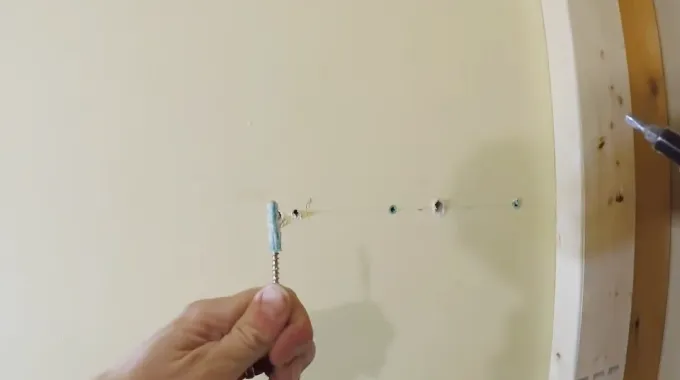Last Updated on February 7, 2023
You may need to remove a drywall anchor and the attached screw in many situations. This can be necessary if you are planning to hang something heavier than what the anchor was initially intended for. Or if you need a wall repaired.
Unscrewing from drywall anchors may sound complicated, but with the proper tools and technique, they can be mastered in a jiffy.
There are different ways to do it, like using a screwdriver, drill, pry bar, or even a wrench. A screwdriver is often the most straightforward option when removing an anchor’s screw since all you need is the right-sized Phillips or flathead driver.
Alternatively, a drill with a steel cutting bit can also effectively unscrew the anchor’s screw in reverse mode.
A pry bar/plier or wrench can also be used to loosen up the screw head until it is easy enough to remove. Let’s get all the details and make it easy.
Preparation for Removing Screw from Drywall Anchor
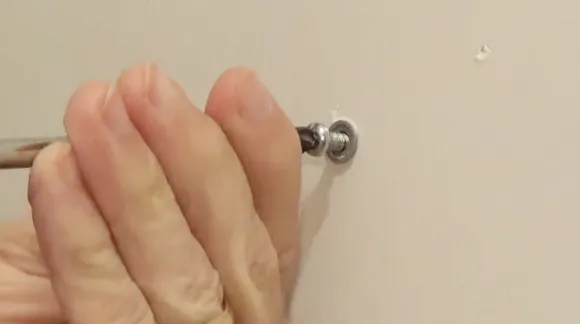
Gather Necessary Supplies
To get the screw out of a drywall anchor, you’ll need to gather all the necessary supplies before attempting the job. First, you’ll need a screwdriver with the appropriate head size to fit the head of the screw (Phillips or Flathead).
You should also have a hammer and pry bar at hand to make removing the anchor from the wall easier if necessary.
Also, a pair of pliers, either needle-nose or slip-joint, will come in handy for gripping and twisting off any stubborn screws that refuse to come out on their own.
Depending on what type of anchor you’re dealing with, you may also need a drill and drill bit of the correct size and a wrench to remove it from your wall.
Take Precautions
When attempting to remove screws from wall anchors, safety should always be a priority. It is advised that safety goggles be worn at all times, as drilling and hammering can cause particles to fly into one’s eyes, leading to injury.
A dust mask should also be worn while working as dust may fill the air due to drilling or chiseling. When using a drill, make sure you keep a firm grip on it, as vibrations can cause it to move unexpectedly and cause harm if not held securely.
Lastly, exercise caution when working near electrical outlets and cables since they could sustain damage if they come into contact with any of your tools during this process.
Prepare Work Area Properly
Once all supplies are gathered and safety precautions taken, prepare the area where you will extract screws from the wall anchor.
This means removing any furniture that could obstruct your work area or impede your progress in any way.
It is also important to cover nearby flooring or other surfaces with a drop cloth to protect them from any debris created by extracting the screw from its anchor in the wall.
How to Get Screw Out Of Drywall Anchor: 4 Methods
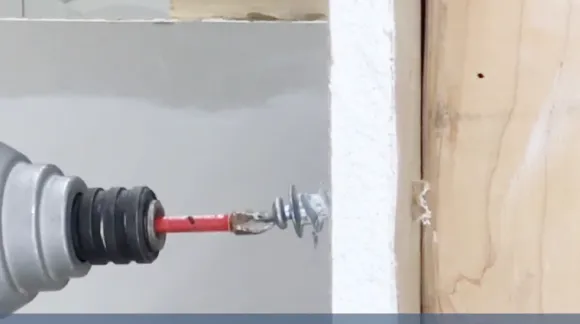
Using a Screwdriver
To remove a screw from the drywall anchor using a screwdriver, begin by identifying what type of screws are used in the drywall anchor.
Once you have identified the type of screws, use an appropriately-sized Phillips or flathead screwdriver, depending on the type of screws used.
Place the blade of the screwdriver into the head of the screw and press firmly; turn it counterclockwise until it is fully unscrewed. You may need to apply some pressure while turning in order to remove it altogether.
Using a Drill
If you’re having difficulty unscrewing the anchor with a screwdriver, you can try using a drill machine instead.
To do so, fit your drill bit with an appropriately-sized steel cutting bit for metal and select reverse mode for drilling out screws. Place your drill on the head of the anchor’s screw and turn it carefully in reverse mode until it’s completely unscrewed and you can remove it.
Take care that you keep your hands away from any debris that may be created while removing the screw with a drill machine, as they can cause serious injury if not handled properly.
Utilizing Pry Bar or Pliers
If you are unable to unscrew the drywall anchor’s screw using either a Phillips or flathead screwdriver or even drilling, another method is to use a pry bar or pliers.
To do so, insert either tool around one side of the head of the drywall anchor’s screw and gently pry off until it is loosened enough for removal.
Be careful not to overdo this, as there is always risk involved when working with metal tools such as pry bars and pliers, as they can cause significant damage if not used properly and cautiously.
Utilizing Wrench
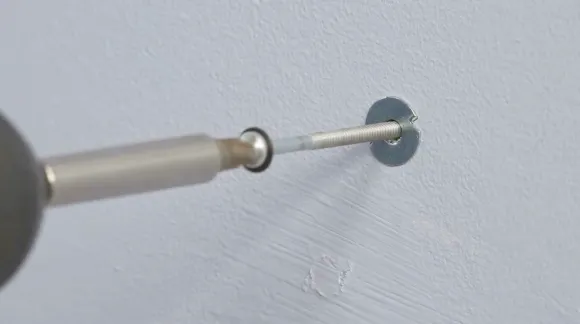
Finally, if all else fails when trying to remove your drywall anchor’s screw, try using a wrench like an adjustable wrench or pipe wrench as it provides more torque which can help break through stubborn corrosion buildup that might be preventing easy removal from happening.
Slide your chosen wrench over either end of your drywall anchor’s screw, ensure that its jaws tightly grip on both sides, then turn clockwise until tight, then switch direction and rotate counterclockwise until it is fully loosened and able to be removed without much effort at all.
Clean up Any Dust or Debris Caused by The Extraction Process
Once all screws have been successfully removed from their drywall anchors, clean up any dust or debris caused by the extraction process.
You can use a cloth rag or vacuum attachment designed for drywall removal. It’s especially handy when there’s a lot of dust accumulated in hard-to-reach crevices and corners.
Discard any broken bits of drywall anchors that may still be stuck inside walls, as these are considered hazardous waste due to the potential risk of causing further damage if left unattended.
Carefully examine areas where screws were located and repair any noticeable damages on walls for enhanced aesthetic value once the completed project is done.
How Do You Loosen a Screw That Won’t Budge?
The best way to loosen a stubborn screw is to spray the screw with a rust penetrant and let it sit for at least 15 minutes. Once you’ve done that, spray the screw again and use a hammer to tap the head of the screw directly.
After that, attempt to turn the screw with a screwdriver again. If this doesn’t work, try using different types of tools, such as pliers or an adjustable wrench.
Depending on the type of material surrounding the screw, you could also use an electric drill with an appropriate bit for unscrewing bolts.
How Do You Get Rid of Stripped Screw Pieces In Drywall?
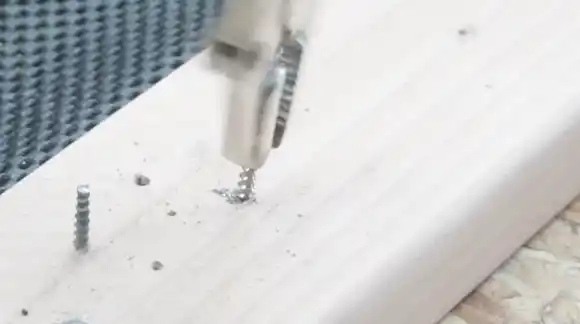
The best way to remove stripped screw pieces in drywall is by using a pair of needle nose pliers or a small pair of tweezers.
Carefully insert the pliers or tweezers into the screw hole where the screw was removed and grasp onto any remaining piece of the broken screw and pull it out.
If necessary, use a larger drill bit than what was used for the original hole to create more space in order to better reach the broken piece.
Once all pieces are removed, fill any noticeable gaps with the best joint compound or spackle before painting over for a seamless finish.
Can You Reuse Drywall Anchor Holes?
Yes, it’s possible to reuse drywall anchor holes by filling them first and then re-drilling them for new anchors.
To get the closest strength approximation to what was initially used for drywall, opt for a standard weight-setting compound instead of an all-purpose pre-mixed compound or lightweight compound.
Ensure you’re careful when drilling out old holes, and double-check that your anchors are securely fastened before hanging anything from your wall.
Can Drywall Anchor Break If Over Tightened the Screw?
You can break a drywall anchor if you overtighten the screw. This can happen when too much torque is applied to the screw, which can cause the metal or plastic anchor to fracture.
The screw should be securely fastened into the wall, but not so much that it begins to strip out the material of the anchor itself. If this happens, then you may need to replace your drywall anchor and try again with a different type of hardware or drill bit size.
Can You Hammer Drywall Screws In?
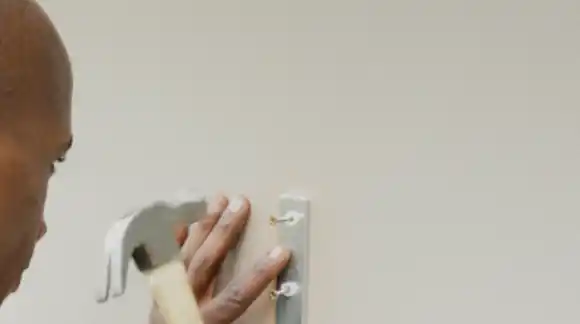
You shouldn’t hammer in drywall screws because it could cause damage and compromise their installation. Drywall screws should be inserted with a drill or manual screwdriver, not hammered like nails.
If a hammer is used to secure drywall screws into place, it could cause them to become loose due to not being properly secured into the wall’s surface material.
Using a hammer can also cause indentations that will be visible after painting and finishing touches have been applied and can adversely affect the appearance of your wall’s surface material.
Will Vinegar Loosen Drywall Screw From Drywall Anchor?
Vinegar can be used to loosen a drywall screw from a drywall anchor. It’s easy to do, just apply it directly onto the metal screw and let it sit for a few minutes.
This helps break down adhesives that usually attach them firmly in place, so they’re easier to remove. After soaking, give each one a gentle twist using pliers, and you’re all set. Clean off any remaining traces of vinegar afterward.
Achieve Safe & Successful Screw Removal From Drywall Anchor
By now, you know that there are several different ways to get the screws out of a drywall anchor. Each method involves using the right tool tailored to fit the size and shape of the screw head to remove it successfully.
Whether it’s using a screwdriver or drill bit with reverse mode activated on metal screws, utilizing a pry bar or pliers for plastic anchors, or even utilizing a wrench for larger tasks, all options have been proven successful when used correctly.
So give one of these methods a try today and easily get those pesky screws out of your wall once and for all.
